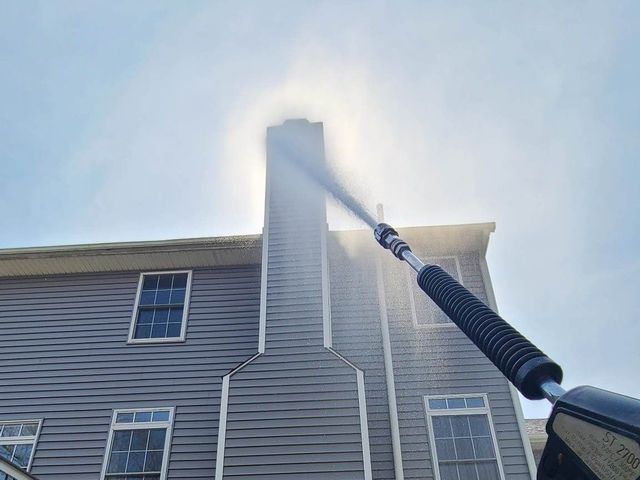The Benefits and Basics of Crawl Space Encapsulation for Healthier Homes

What is Crawl Space Encapsulation?
Crawl space encapsulation is vital for homeowners looking to protect their homes’ foundations from excess moisture. This method involves sealing the crawl space with a robust, durable vapor barrier to prevent moisture from seeping in. By maintaining a controlled environment under your house, crawlspace encapsulation eliminates the moist conditions that often lead to mold growth and even structural damage over time. This preventive measure is essential for anyone looking to improve their home’s health and value.
How Crawl Space Encapsulation Benefits Your Health
The air quality inside your home is significantly affected by conditions in the crawl space. Without crawlspace encapsulation, allergens, dust, and mold spores can easily enter your living areas, posing health risks. Sealing the crawl space helps to drastically cut down on these harmful elements, promoting cleaner and healthier air for you and your family. According to the American Lung Association, maintaining good indoor air quality is crucial for respiratory health and overall well-being, underscoring the importance of such home improvements. Encapsulation bolsters your home’s defense against pollutants and contributes to a safer living environment.
Financial Benefits of Crawl Space Encapsulation
Beyond health improvements, crawl space encapsulation offers several financial advantages. Homeowners will notice reduced heating and cooling costs due to improved energy efficiency. Maintaining a steady temperature allows your HVAC system to operate more efficiently, lowering utility bills. Moreover, an encapsulated crawl space can enhance the market value of your home, as prospective buyers are often willing to pay a premium for homes with superior structural integrity and lower maintenance needs. Additionally, by reducing the presence of moisture, encapsulation usually negates the need for frequent and costly pest control measures, as pests thrive in damp environments.
Key Signs You Need Crawl Space Encapsulation
Identifying the need for crawl space encapsulation can save you from potential headaches. Common indicators include musty odors, visibly sagging floors, and elevated humidity levels within the home. Furthermore, signs of water damage, such as puddling or stained walls in the crawl space, should prompt immediate action. Frequent flooding episodes in the crawl space also indicate the need for encapsulation. Addressing these issues promptly helps mitigate more severe problems that could endanger the structural soundness of your home. In cases where water intrusion has already occurred, water damage cleanup companies may be necessary to properly assess and remediate the affected areas before encapsulation can be effective. Their expertise helps ensure that moisture issues are fully addressed, reducing the risk of mold growth and long-term structural damage.
Steps in the Crawl Space Encapsulation Process
Initial Inspection and Clean-Out
The encapsulation process begins with a meticulous inspection and clean-out. This includes removing debris, pests, and any sources of water intrusion. An in-depth examination helps identify potential problem areas that require attention before the barrier is installed. A clean slate ensures that the vapor barrier can be applied efficiently and effectively, setting a solid foundation for protecting your home’s crawl space.
Installation of Vapor Barriers and Dehumidifiers
Once the space is cleared, the next step involves installing a vapor barrier across all exposed surfaces, such as floors and walls. This barrier protects against moisture intrusion, effectively warding off dampness that could compromise your home’s structural integrity. Dehumidifiers may also be installed to keep moisture levels in check, ensuring that your crawl space remains dry and healthy, which is crucial in regions with high humidity.
Maintenance Needs for Effective Encapsulation
Regular inspections are key to maintaining the benefits of an encapsulated crawl space. These checks should focus on the condition of the vapor barrier, ensuring that it remains intact and free from damage. Regular monitoring of dehumidifiers is equally essential to sustain effective moisture control. Scheduling professional assessments every couple of years can also help preempt any potential issues, safeguarding your home’s health in the long run.
DIY vs. Professional Encapsulation: Pros and Cons
Regarding crawl space encapsulation, homeowners often weigh the pros and cons of DIY versus professional installations. Professionals offer various benefits, including expertise, access to specialized tools, and the ability to ensure a comprehensive job that meets industry standards. However, a DIY approach may appeal to those looking to save money, although this generally comes with trade-offs such as increased time investment and the necessity to research effective techniques.
Maintenance Tips for an Encapsulated Crawl Space
- Regular moisture and pest inspections should be conducted to catch any issues early.
- Ensure dehumidifiers are serviced and operating at peak efficiency.
- Schedule professional inspections every couple of years to maintain the integrity of the encapsulation.
Common Misconceptions About Crawl Space Encapsulation
Despite its many benefits, crawl space encapsulation is often surrounded by myths, particularly regarding its cost versus benefit. Many people mistakenly believe it’s prohibitively expensive, ignoring the long-term savings and health improvements it offers. Understanding the differences between full and partial encapsulation is crucial for making informed decisions about your home. Recognizing these misconceptions allows homeowners to appreciate the true value this process brings.




